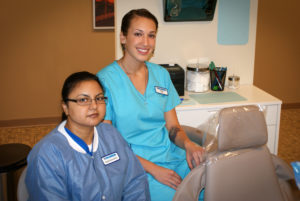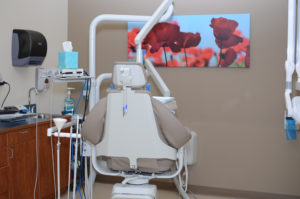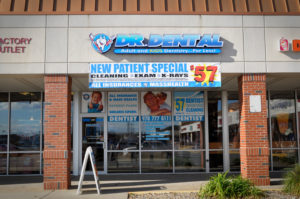
Did your dentist tell you that you need a root canal? Millions of root canals are performed around the world every year, helping preserve tooth health and smiles of the patients. Yet, people are outright scared of the root canal treatment. It is important that this perception is changed. For this purpose, you need to understand the ins and outs of the procedure and what it entails.
A root canal is not exactly a treatment. It is the hollow part inside a tooth containing blood vessels, cells and the nerve tissue. Root canal treatment entails the removal of everything that is inside the root canal. It is then cleaned and decontaminated by the dentist, who shapes it with tiny irrigation and file solutions.
The space is then filled with a rubber-like material and sealed using special cement. Subsequent to the root canal procedure, the patient does not feel any pain in the tooth. The tooth will already be dead because of the removal of nerve tissue and elimination of the infection. As soon as the root canal is completed, a permanent crown or filling is required for protecting the tooth.
Is it Painful?
People in general dread Root Canals, as they fear it will be quite painful. However, when an expert performs the treatment, it is relatively pain-free. Contrary to popular belief, the pain is actually from the infection and not due to the treatment. The tooth along with the surrounding area is numbed using local anesthesia for relieving the pain of the process. It is quite normal to experience some tenderness. The pain can be short-lived and is relieved by over the counter medication. Prescription drugs, like codeine, are also available if required. An antibiotic can also be prescribed for preventing infection.
When Do You Need Root Canal Treatment?
A tooth comprises of a crown and roots. The root canal structures around the pulpy interior of a tooth. The crown lies above the gum, whereas the roots are below it which link the tooth to the jawbone. Within the root and the root canal, the pulp is present. The pulp has soft tissue with blood vessels and nerves. Its purpose is to nourish the tooth and moist the surrounding material. The nerves in the pulp can sense coldness and hotness as pain.
Once the pulp is infected, it is likely that the infection spreads through the root canal system of the tooth, gradually leading to an abscess. An abscess is a swollen area where pus accumulates, causing inflammation of the tissues surrounding the tooth. An abscess has various symptoms ranging from a dull ache to a sharp pain. The tooth also feels tender when you are eating. If root canal treatment is delayed, the infection begins to spread eventually.
In the absence of treatment, the tooth becomes loose and has to be extracted. Some patients may rather have the tooth pulled out, particularly if there is a lot of pain and the tooth is so decayed that it cannot be restored. This also happens in case of a bone loss owing to periodontal, or gum disease. However, removing a tooth can also result in crooked area that surrounds the teeth. Not only does it look unpleasant, but can make it extremely difficult to eat properly. Root canal therapy is performed to save the tooth as well as to eliminate pain altogether.
In more severe cases, where the tooth cannot be saved, another option is to get an implant. However, it is healthier to save the natural tooth, as nothing can function better. Root canal therapy takes between one and three sessions to complete and involves a few steps.
The Process of Root Canal
A root canal is best performed by a trained dental surgeon. Such a dentist is called an endodontist. The process begins with the first visit, when the surgeon makes a small access hole on the exterior of the tooth. The patient is under local anesthesia and the surgeon initiates the process by removing the dead pulp tissue with significantly small files.
After this, the canals are disinfected and are filled with a rubber-like material. The canals are then sealed using adhesive cement. The entire procedure is usually completed in a single session. However, in case of large infections, multi-canals or curved canals, there may be a need for an additional appointment.
The tooth becomes more sensitive and fragile than a normal tooth after the root canal treatment. Once the pulp tissue is removed, the tooth is nourished from the periodontal membrane which joins the tooth to the bone. As this membrane is living, the tooth is still able to function in the absence of the pulp tissue. However, as time passes, the teeth become brittle and weak. That is why, it is important that the crown or filling is added to ensure that the patient does not chew or bite on the tooth. This allows the person to use the tooth just as before.
How Much Does It Cost?
Charges of dental treatments vary largely. However, saving the tooth with a root canal is moderately cost-efficient. Extraction is another option, and the expenditure incurred by a bridge or an implant for saving the tooth later is usually more costly. Beware, as extracting a tooth can also result in misaligned teeth or malocclusion as well as difficulty in chewing.
Avoiding Root Canal Complications
Like any surgery, a few complications are linked to root canal procedures. It may happen that the dentist is only able to find three root canals in a tooth that has four of them. This one untreated canal will continue to cause infection that can penetrate into the bone.
The root canal has to be sealed completely for the infection not to return. For this, the filling material has to go deep enough into the canal. Moreover, in the procedure, the root of the tooth may break, or the instruments can puncture the canal, making it difficult to fill the tooth. When these complications occur, only an experienced dental surgeon can complete the root canal job successfully and correct the problem.
Let Your Dentist Do the Job for You
To prevent any major complications, it is extremely important you choose only experienced and professional dental surgeons for your root canal treatment. Proper instructions should be followed and antibiotics, if any, must be taken as per the dentist’s recommendation to finish the entire process.











